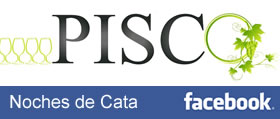Pisco / Peru: the country you’ve never visited "Pozuzo"
By Gillian Autton
South American Explorers
Did you know that there are Peruvians with blonde-hair and blue-eyes living in the Peruvian Central Jungle? Did you know that they also speak German and dance the polka?
they also speak German and dance the polka?
An approximate 10-hour journey from Lima will take you to the towns of Oxapampa and Pozuzo, the site of a German-Austrian colony, which still today maintains many German customs and foods. The most interesting thing about this colony is its unique mix of German and Peruvian culture. If you have the opportunity to visit, it is definitely worth it!
History
The towns of Pozuzo and Oxapampa were founded in 1891 by German-Austrian colonists. The colonization originated in 1853 with an agreement between Baron Damian Freiherr von Schutz-Holzhausen and the Peruvian government to bring 10,000 colonists from Prussia. After a four-month rough boat trip, the colonists arrived at Callao, near Lima, where they encountered a civil war. While some of the colonists remained in Lima, most moved to the jungle through the Port of Huacho, and toward their final destination, which is today called Pozuzo.
Although 10,000 colonists left Prussia, only 170 actually finished the 2-year journey to Pozuzo, with some dying but most settling in towns along the way. In 1891, Father José Egg established Pozuzo as an important cattle-raising town.
Today about one-third of the inhabitants of Pozuzo and Oxapampa are descendants of the German colonists. It is common to see locals with blonde hair and blue eyes, and traditional German wooden chalets can be found dotted across the countryside.
In Pozuzo, the German influence is even greater. Most still speak the language and eat the traditional foods of their ancestors.
What to do?
While the history and culture of the area is its main attraction, there are also a number of activities you can participate in here. Oxapampa has a bat cave, which you can tour and explore. There is also a sugarcane farm nearby, and not far outside Oxapampa is the Catarata El Encanto (The Waterfalls of Enchantment), which are 3 sets of waterfalls, with deep plunging pools. Near Oxapampa, the Yanachaga National Park is a recognized UNESCO biosphere reserve. It serves as a home to various orchids, cedars, deer, 427 different bird species and the spectacled bear. It is also the home to the Yánesh and Ashánika native communities. Definitely worth a visit!
In Pozuzo, rafting and canoeing are popular activities. In addition, the central plaza is home to the 18th century San José church, and the Schafferer Museum, which holds a small but very interesting collection of antiques and photos from colonial times. You may also take a walk to see a traditional house. The walk is beautiful – it gives you a great opportunity to appreciate the wide range of flora and fauna, and once you get to the house, you can also visit the Museo Egg Vogt. Nearby is Recreo Guacamayo, which is made up of natural swimming pools, as well as a viewing point for Gallitos de las Rocas, Peru’s national bird.
This area is especially great to visit during the holidays. In March/April, during Holy Week, there are many celebrations and parties, food and dancing. The date changes every year though, so check before you go. The Selvámonos festival, an annual festival held in October, celebrates the cultural background of these towns. The festival promotes the local food (a mix of German and Peruvian), artists and dances, and even has circus acts as entertainment! If you are in the area during October, this is definitely one place you can’t miss!
Getting There
There are direct buses from Lima to Oxapampa through Transportes Oxapampa and Lobato. This is a 10-hour trip, but if you want to break it up, you can book a trip to San Ramon or La Merced, then take a colectivo to Oxapampa. To get to Pozuzo, you can take one of the four daily colectivos from Oxapampa.
South American Explorers
For more information on Oxapampa and Pozuzo, visit the South American Explorers clubhouse, where you can buy our North Jungle info pack! We are located at Calle Piura 135, Miraflores (near Av. Arequipa). South American Explorers is an independent traveler’s club. We are a non-profit organization that provides information to travelers and a home-away-from-home in South America. We have clubhouses in Lima, Cusco, Quito and Buenos Aires. For further information on the club and our member benefits, visit us at: www.saexplorers.org
We would like to thank Mrs. Gillian Autton for allowing us to post this article.
Translate by Katrina Heimark
South American Explorers
Did you know that there are Peruvians with blonde-hair and blue-eyes living in the Peruvian Central Jungle? Did you know that
 they also speak German and dance the polka?
they also speak German and dance the polka? An approximate 10-hour journey from Lima will take you to the towns of Oxapampa and Pozuzo, the site of a German-Austrian colony, which still today maintains many German customs and foods. The most interesting thing about this colony is its unique mix of German and Peruvian culture. If you have the opportunity to visit, it is definitely worth it!
History
The towns of Pozuzo and Oxapampa were founded in 1891 by German-Austrian colonists. The colonization originated in 1853 with an agreement between Baron Damian Freiherr von Schutz-Holzhausen and the Peruvian government to bring 10,000 colonists from Prussia. After a four-month rough boat trip, the colonists arrived at Callao, near Lima, where they encountered a civil war. While some of the colonists remained in Lima, most moved to the jungle through the Port of Huacho, and toward their final destination, which is today called Pozuzo.
Although 10,000 colonists left Prussia, only 170 actually finished the 2-year journey to Pozuzo, with some dying but most settling in towns along the way. In 1891, Father José Egg established Pozuzo as an important cattle-raising town.
Today about one-third of the inhabitants of Pozuzo and Oxapampa are descendants of the German colonists. It is common to see locals with blonde hair and blue eyes, and traditional German wooden chalets can be found dotted across the countryside.
In Pozuzo, the German influence is even greater. Most still speak the language and eat the traditional foods of their ancestors.
What to do?
While the history and culture of the area is its main attraction, there are also a number of activities you can participate in here. Oxapampa has a bat cave, which you can tour and explore. There is also a sugarcane farm nearby, and not far outside Oxapampa is the Catarata El Encanto (The Waterfalls of Enchantment), which are 3 sets of waterfalls, with deep plunging pools. Near Oxapampa, the Yanachaga National Park is a recognized UNESCO biosphere reserve. It serves as a home to various orchids, cedars, deer, 427 different bird species and the spectacled bear. It is also the home to the Yánesh and Ashánika native communities. Definitely worth a visit!
In Pozuzo, rafting and canoeing are popular activities. In addition, the central plaza is home to the 18th century San José church, and the Schafferer Museum, which holds a small but very interesting collection of antiques and photos from colonial times. You may also take a walk to see a traditional house. The walk is beautiful – it gives you a great opportunity to appreciate the wide range of flora and fauna, and once you get to the house, you can also visit the Museo Egg Vogt. Nearby is Recreo Guacamayo, which is made up of natural swimming pools, as well as a viewing point for Gallitos de las Rocas, Peru’s national bird.
This area is especially great to visit during the holidays. In March/April, during Holy Week, there are many celebrations and parties, food and dancing. The date changes every year though, so check before you go. The Selvámonos festival, an annual festival held in October, celebrates the cultural background of these towns. The festival promotes the local food (a mix of German and Peruvian), artists and dances, and even has circus acts as entertainment! If you are in the area during October, this is definitely one place you can’t miss!
Getting There
There are direct buses from Lima to Oxapampa through Transportes Oxapampa and Lobato. This is a 10-hour trip, but if you want to break it up, you can book a trip to San Ramon or La Merced, then take a colectivo to Oxapampa. To get to Pozuzo, you can take one of the four daily colectivos from Oxapampa.
South American Explorers
For more information on Oxapampa and Pozuzo, visit the South American Explorers clubhouse, where you can buy our North Jungle info pack! We are located at Calle Piura 135, Miraflores (near Av. Arequipa). South American Explorers is an independent traveler’s club. We are a non-profit organization that provides information to travelers and a home-away-from-home in South America. We have clubhouses in Lima, Cusco, Quito and Buenos Aires. For further information on the club and our member benefits, visit us at: www.saexplorers.org
We would like to thank Mrs. Gillian Autton for allowing us to post this article.
Translate by Katrina Heimark













